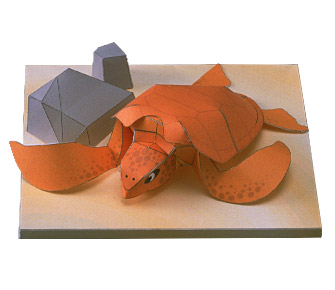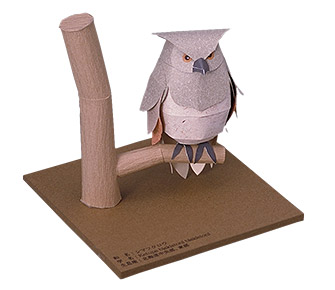Blakiston's Fish Owl
Papercraft kit : Blakiston's fish owl, often called the philosopher of the forest.
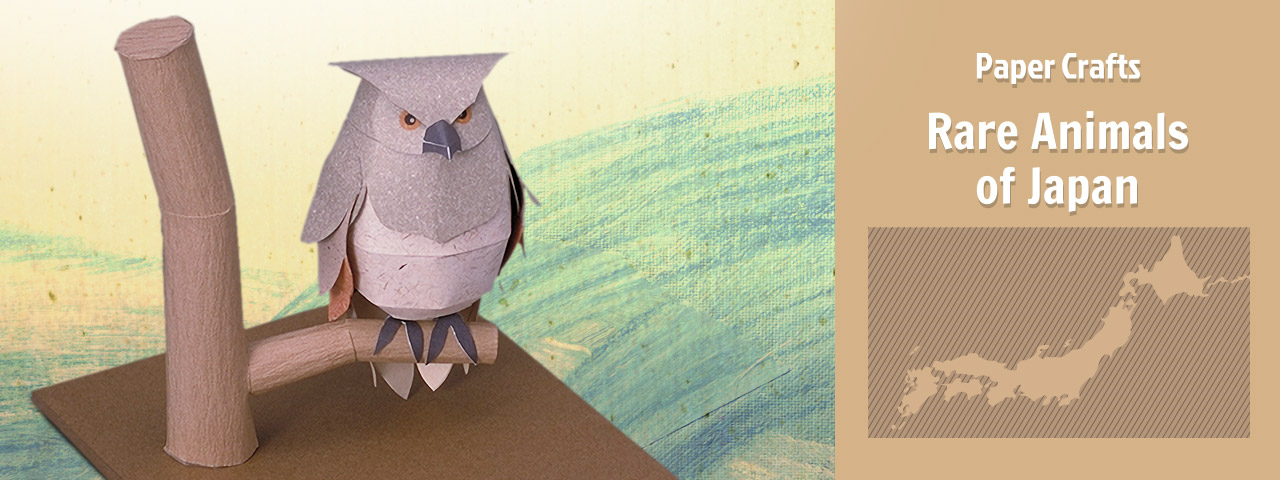
Blakiston's Fish Owl, Japan’s largest owl, with a wingspan reaching 180 centimeters (72 inches), makes its home exclusively in the central and eastern parts of Hokkaido.
However, their number in the wild has diminished to approximately one hundred due to river-related construction, a decrease of fish for prey, and deforestation.
Blakiston’s Fish Owl is currently classified as a “Critically Endangered [CR]” species in the Red List.
Assembly instructions for paper sculptures of Blakiston’s Fish Owl, nicknamed “philosopher of the forest,” as well as photo images of the completed paper sculpture may be downloaded at this web site.
Download - Parts sheet & InstructionsThis data was released in August, 1999.
Blakiston's Fish Owl - Animal Guide

- Blakiston's Fish Owl - Strigidae
- Ketupa blakistoni, blakistoni
- 70cm(28in.)long
- RED DATA BOOK (RDB) categories : Critically Endangered [CR]
Blakiston's Fish Owl (Ketupa blakistoni blakistoni), a member of the fish owl family, is Japan's largest owl, with a wingspan reaching 180 centimeters (72 inches).
The creature is characterized by its large crown-like ear coverts and thick feather coat, which is a natural protection enabling it to live in a harsh environment where temperatures drop to -30 degrees Celsius (-22 degrees Fahrenheit).
The owl's hooting call is heard from late afternoon to sunset, from which time the owl becomes active throughout the night. It has large eyes like other types of owls and is nicknamed "philosopher of the forest" due to its fastidious thinker's facial expression.
Blakiston's Fish Owl has been affectionately called "Kotan-koro-kamui" (meaning guardian deity of villages) for centuries by the Ainu people, the earliest indigenous group of people living on the island of Hokkaido. It feeds mainly on fish, while most other species prey on mice, rats, and insects. Its dynamic hunting method consists of diving from the air for fish swimming near the surface of the water and grasping its prey with its sharp, spiked talons. The fish owl dwells in a nest built inside broad-leaf trees beside lakes or rivers.
Blakiston's Fish Owl lives in monogamy throughout the year and, unlike other owls, has the unique habit of remaining with its chicks for one to three years.
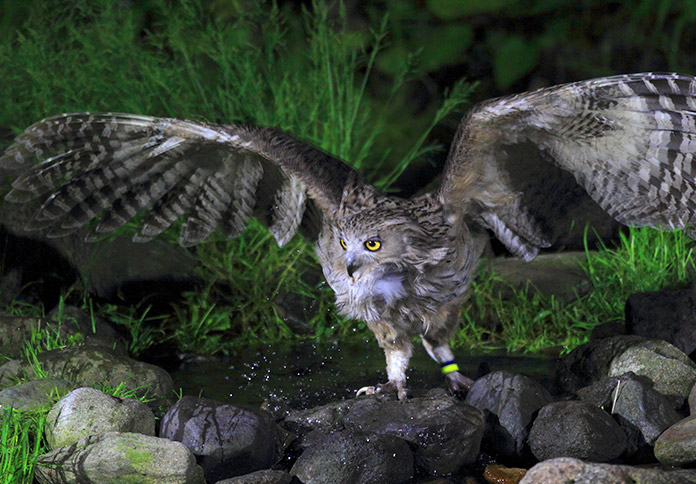
Habitat
Blakiston's Fish Owl is found in the sub-arctic region of Japan. It inhabits wooded areas along rivers in the central and eastern parts of Hokkaido. However, the number of birds in the wild has diminished to approximately one hundred, due mainly to river-related construction, a decrease of salmon coming upstream to spawn and deforestation.
Blakiston's Fish Owl was designated as a natural treasure of the nation in May, 1971. In order to save the owl from the danger of extinction, various means have been recently attempted, such as the drilling of new tree holes or placement of nesting boxes in forests where a considerable number of trees had been cut down.
The Wild Life Preservation Bureau of Hokkaido, Corporation also makes an active effort to artificially raise and breed the owl.
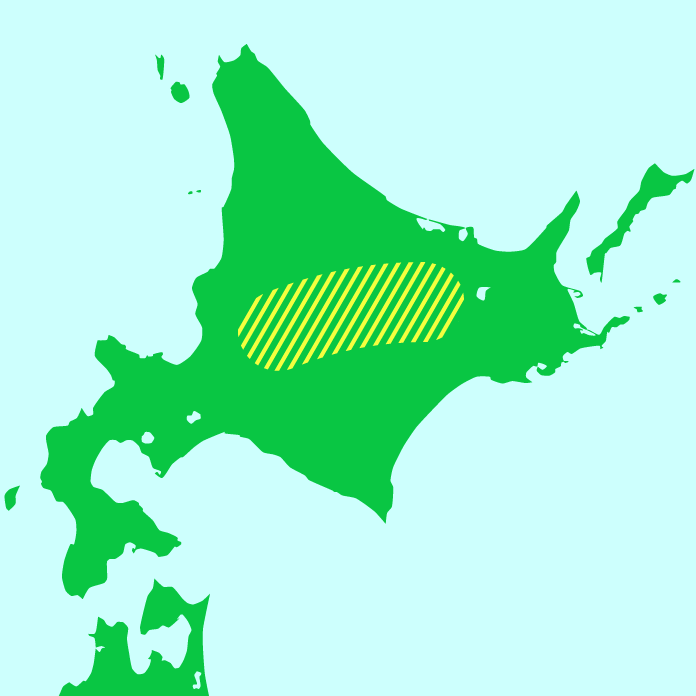
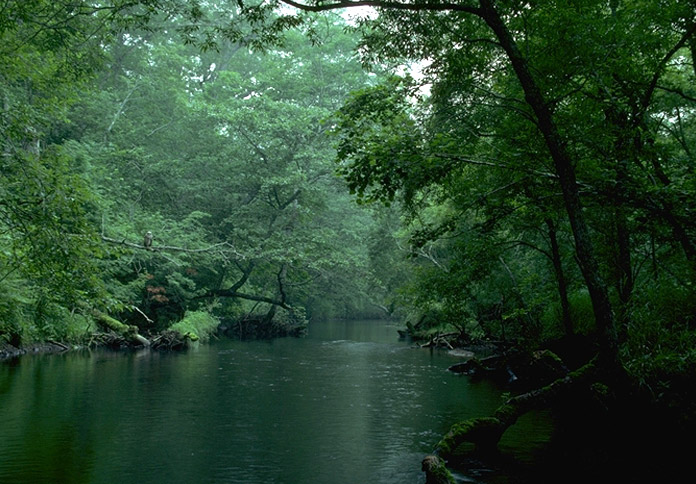
Photographed by Junrou Yamamoto
Wildlife Preservation Bureau of Hokkaido; Corp.
About RED DATA BOOK
The Red Data Book is a report compiled by the Environment Agency classifying various threatened animals in Japan and their present status. From a biological viewpoint, the Environment Agency has evaluated the extinction risk level of each individual taxon and compiled a list for the Red Data Book. However, the Book possesses no legal power to enforce regulations concerning threatened species.
The Red Data Book is broadly employed as fundamental information for advancing the preservation of threatened wild animals.
| EXTINCT | EX | A taxon considered to have become extinct in Japan. |
|---|---|---|
| EXTINCT IN THE WILD | EW | A taxon known to survive only under conservation or in captivity. |
| CRITICALLY ENDANGERED | CR | A taxon facing an extremely high risk of extinction in the wild in the immediate future. |
| ENDANGERED | EN | A taxon facing a very high risk of extinction in the wild in the near future though not critically endangered. |
| VULNERABLE | VU | A taxon facing a high risk of extinction in the wild in the medium-term future though not critically endangered or endangered. |
| NEAR THREATENED | NT | A taxon which can qualify for VULNERABLE in the future depending on its habitat conditions, although it is not facing a high risk of extinction at this present stage. |
| DATA DEFFICIENT | DD | A taxon about which there is not adequate information to make a direct, or indirect, assessment of its risk of extinction. |
| THREATENED LOCAL POPULATION | LP | A taxon facing a high risk of extinction in a certain locality among its limited specific habitats. |
From Environment Agency press materials





